Brief on MS Words
A brief explanation of Microsoft Word and it’s popularity
Microsoft Word is a computer software that allows you to create and modify documents. It is one of the most widely used word-processing programs in the world. It lets you input text, incorporate graphics, and format your document in various ways.
It's simple to use and comes with a slew of built-in features to help you make your writing seem polished. You may also use it to collaborate in real-time with others on the same document. Generally, Microsoft Word is popular because it is adaptable, easy to use, and extensively employed in various sectors and academic subjects.

Logo of MS Word
What is this article about?
Microsoft Word is a powerful tool that has become an essential part of everyday life for many people. This article will take a deep dive into the world of Microsoft Word and explore everything you need to know to become a proficient user. It will start with an introduction to Microsoft Word, its history, and why it's so popular. It will then go over how to use Microsoft Word, including the basics such as opening the program, creating a new document, and saving work. It will also provide tips and tricks to help you work more efficiently. Finally, it will discuss the future of Microsoft Word and how it is evolving to meet the changing needs of its users. Whether you are a beginner or an advanced user, there's something for everyone in this article.
Getting Started with Microsoft Word
How to install Microsoft Word to your laptop
Buy a Microsoft Office license: You may purchase a Microsoft Office license directly from Microsoft or through an authorized reseller.
Get the installer here: After purchasing your license, you must download the Microsoft Office installation. This may be done via the Microsoft website or a link supplied by your reseller.
Install Microsoft Office: Once the installer has been downloaded, double-click it to begin the installation process. Follow the on-screen instructions to install Microsoft Office on your laptop.
Launch Microsoft Word when the installation is complete. The program will need to be activated. Complete the on-screen instructions to activate your license and begin using Microsoft Word.
How to open Word on different operating systems
The process of opening Microsoft Word varies slightly based on the operating system you are using.
On Windows, launch Word by going to the Start menu, choosing Microsoft Office, and then Microsoft Word.
On a Mac, choose the Launchpad icon, enter "Word" in the search field, and then select the Word icon that displays.
If you have an Android or iOS smartphone, you may download and launch the Microsoft Word app from the app store.
Opening Word is typically a simple affair, regardless of the operating system you're using.
Microsoft Word’s Components
Microsoft Word is text-editing software that allows you to create and modify documents. Many components of the program work together to give a sophisticated word-processing experience. Microsoft Word's key components are as follows:
1. Ribbon
The Ribbon is Microsoft Word's primary toolbar. It includes all the tools and commands required to produce and prepare documents.

Ribbon MS Word
2. The Document Area
The Document Area is the primary workspace in Microsoft Word. Here is the location where you may create and modify text documents.
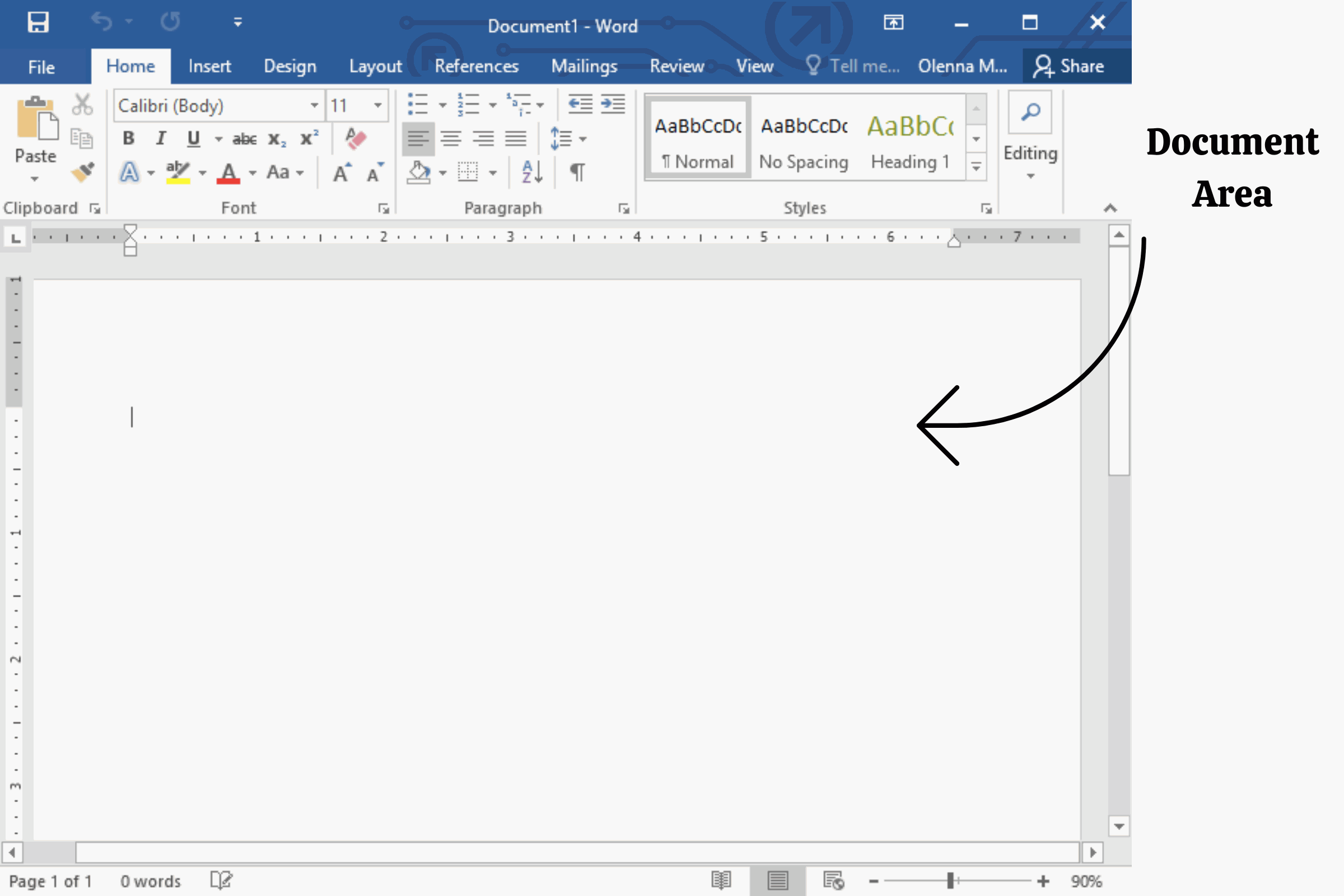
The document area in MS word
3. Quick Access Toolbar
The Quick Access Toolbar is a customizable toolbar that enables rapid access to frequently used functions.
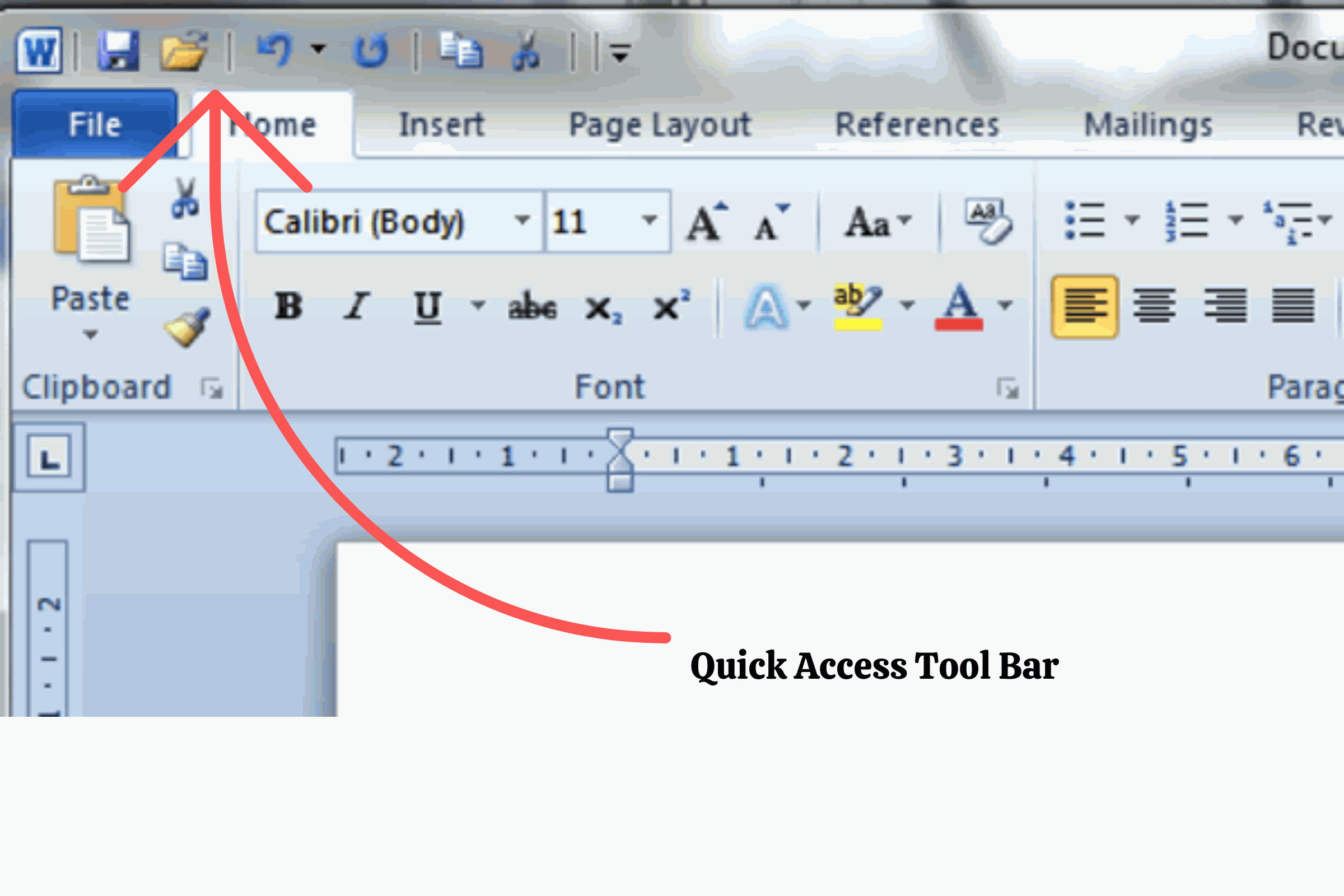
Quick Access Tool Bar
4. File Tab
The File Tab gives you access to document management functions including storing, opening and printing your documents.

File Tab In Microsoft Word
5. Status Bar
The Status Bar displays information about your work, such as the page number, word count, and zoom level.
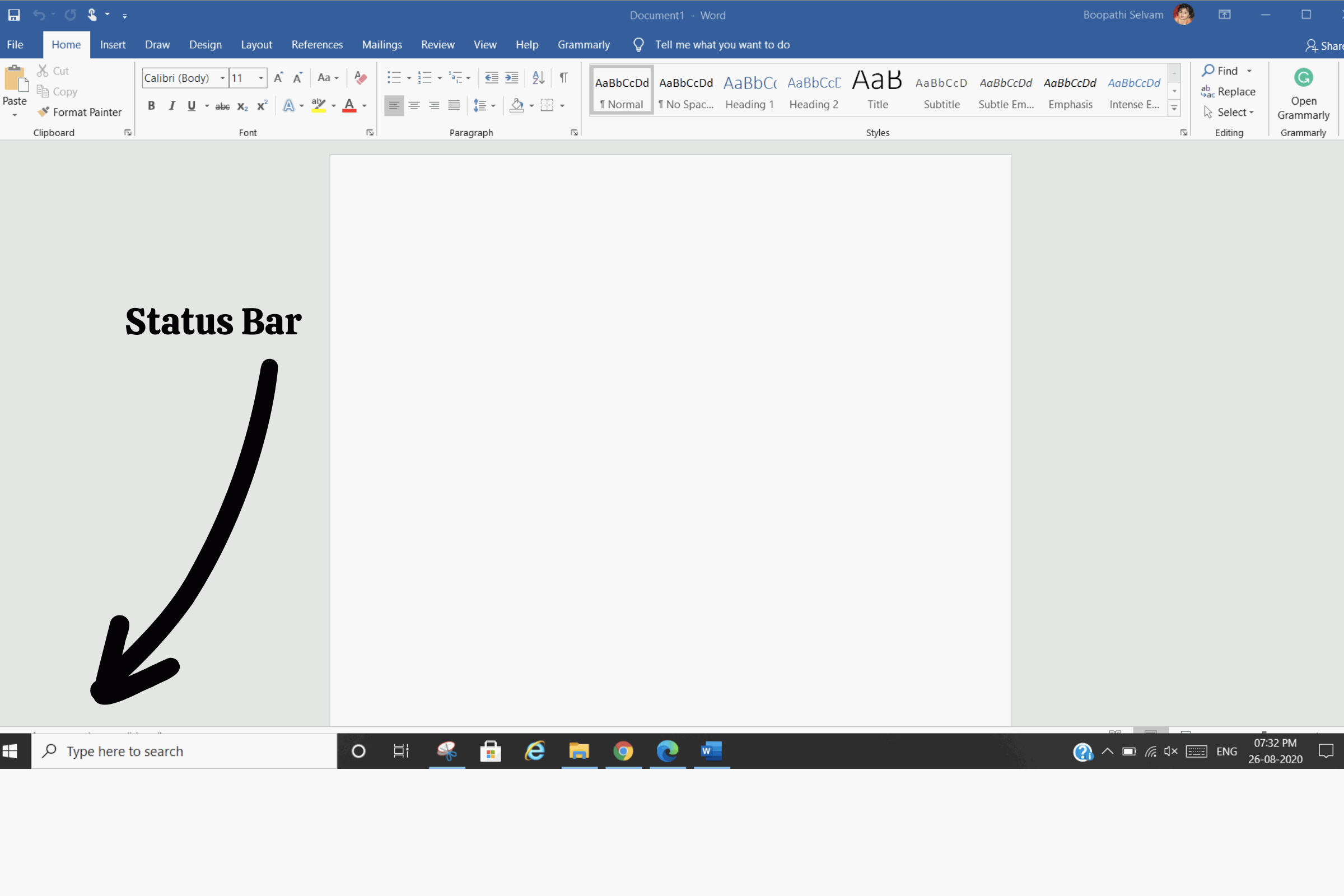
Status Bar in MS Word
6. Insert Tab
The Insert Tab allows you to put many forms of material into your document, such as images, tables, and hyperlinks.

The Insert Tab in MS Word
7. Review Tab
The Review Tab gives you tools for proofreading, reviewing, and revising your content.

Review Tab in Microsoft Word
8. View Tab
The View Tab lets you modify the view of your work, such as converting to a print layout or changing the zoom level.
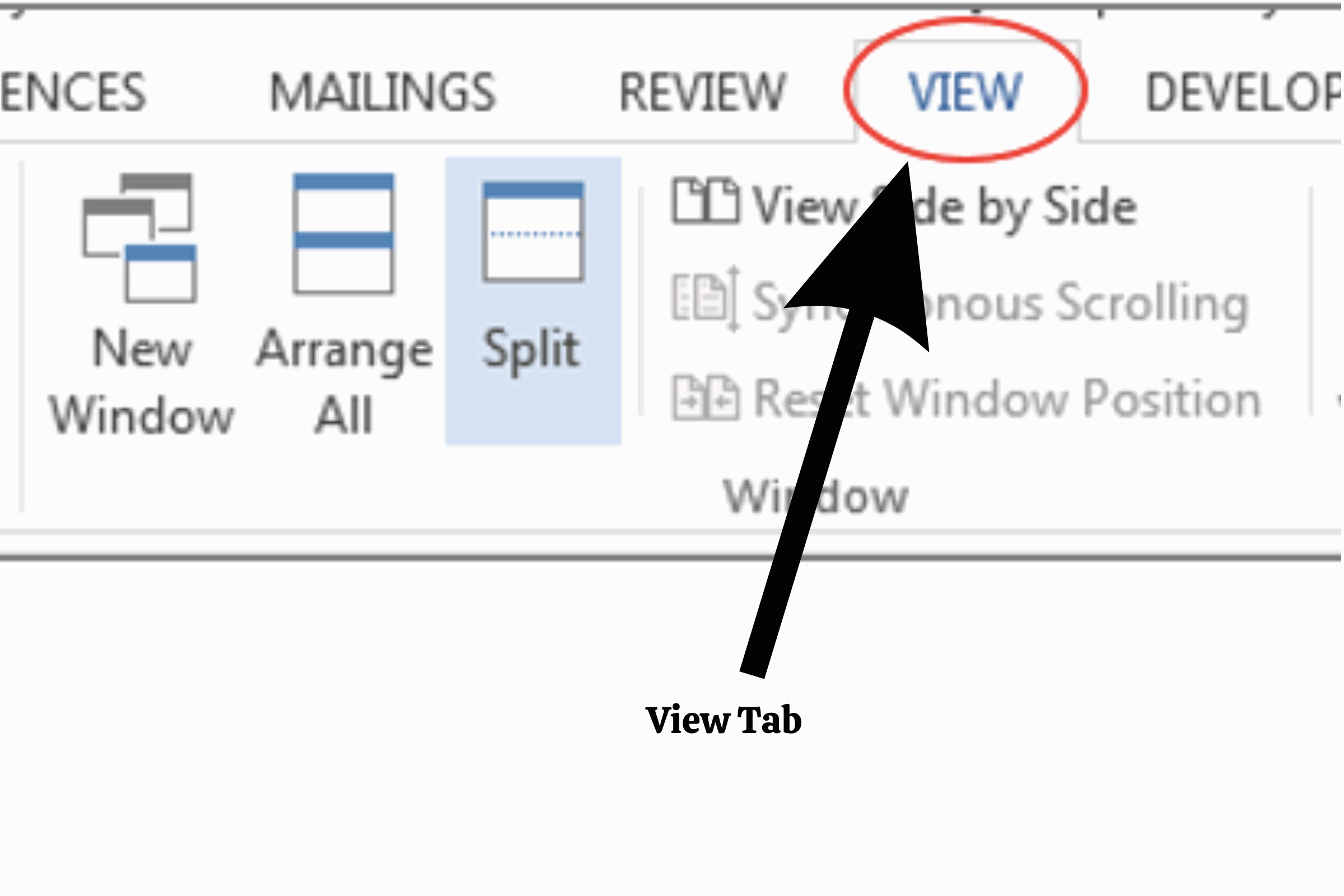
View Tab in MS word
9. Home Tab
The Home Tab contains the most regularly used tools for formatting text, such as adjusting the font, color, and size.

Home Tab in MS Word
Saving documents and document templates
Save: When you create or modify a document or document templates, you must use the Save command to save your changes. This command will be used the majority of the time. When you save a file for the first time, you must choose a name and location for the file. Following that, click Save to save it with the same name and location. To save your work, choose or navigate to a folder, name the document in the File name box, and then click Save. You should frequently click Ctrl+S to save your work as you go. Go to the FILE tab and select Print to print your document.
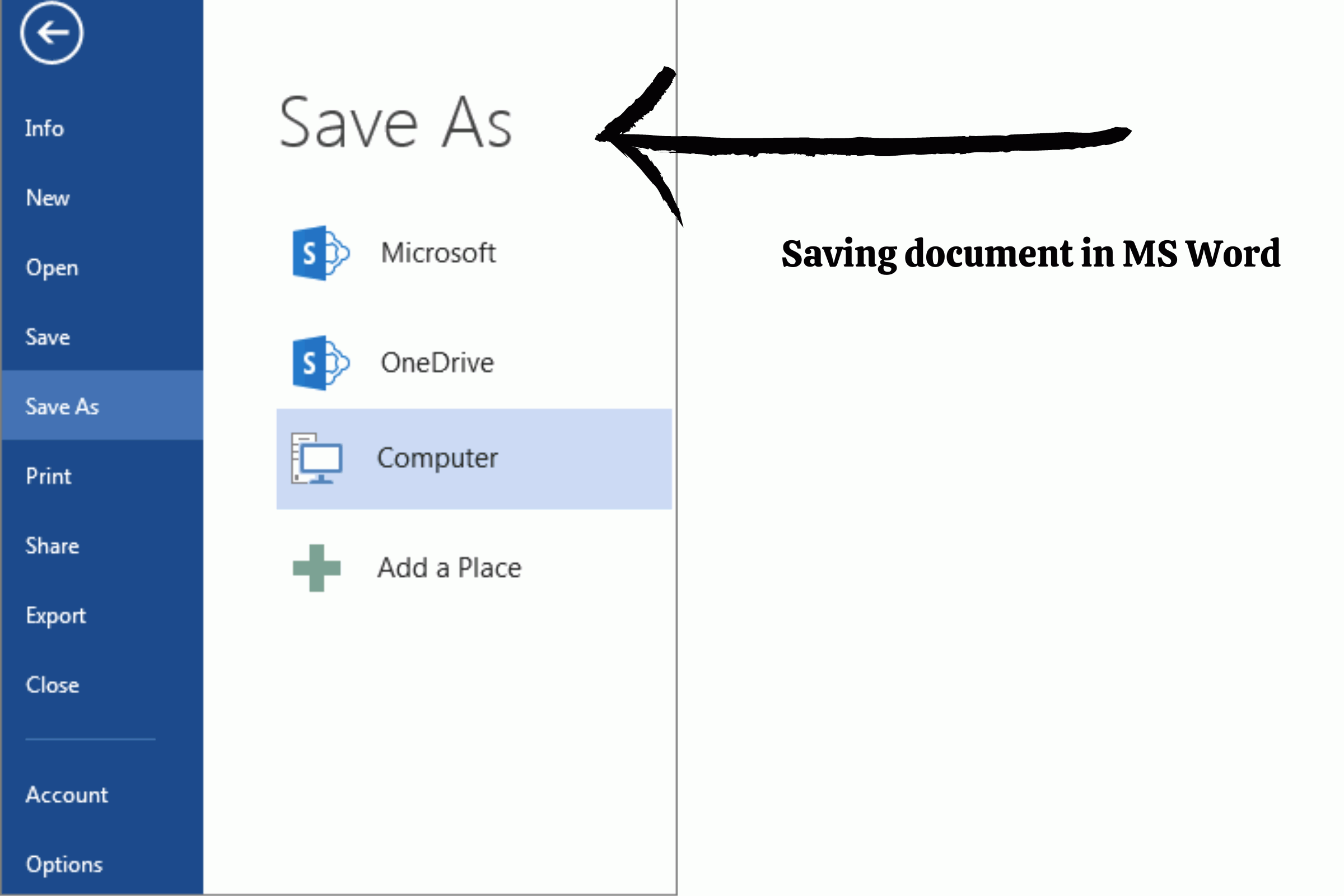
Saving documents in MS Word
How to learn MS Word?
MS Word can be learned through a variety of methods, such as online classes, YouTube tutorials, and paid classes. Online classes offer structured lessons and the ability to interact with instructors and other students. YouTube tutorials are a helpful resource for visual learners. Paid classes offer in-depth instruction and hands-on practice. The key to learning MS Word is practice, which involves creating different types of documents and experimenting with different formatting options. Here is a great source for learning MS Word, https://ezilearnonline.com/word/ to learn everything in detail.
Working with text in MS Word
Dealing with the text in Microsoft Word is a key skill required for generating documents of all types. Following are some general guidelines for dealing with text in Word:

Writing Text in MS Word
To begin inputting text, simply click your mouse where you want the text to appear and start typing.
Text selection: Select text by clicking and dragging the cursor over it, or by holding down the Shift key and using the arrow keys.
Modify content by clicking and typing, or deleting text.
Format text by selecting the text and using the Home tab to change font, size, and color.
Text alignment: Align text to the left, center, or right, or justify it to be aligned on both left and right edges.
Choose the text to format and use the Home tab to add bullet points or numbering.
Go to the Review tab and click the Spelling & Grammar icon to scan your content for spelling and grammatical mistakes.
By understanding these fundamental abilities, you will be able to easily produce and edit the text in Microsoft Word.
Writing with Paragraphs in MS Words
Dealing with paragraphs in Microsoft Word is an essential part of formatting and organizing your papers. These are some general guidelines for working with paragraphs in Word:
Adding paragraphs: To add a new paragraph hit the Enter key. This will begin with a new line and a new paragraph.
Indenting paragraphs: Use the Home tab to indent a paragraph to make lists or highlight individual paragraphs.
Change the line spacing between paragraphs by clicking the Line and Paragraph Spacing option in the Home tab.
Aligning paragraphs: Align paragraphs to the left, center, or right, or justify text to align it on both left and right margins.
Bulleted and numbered lists: Click the Bullets or Numbering button on the Home tab to format paragraphs as bulleted or numbered lists.
Inserting paragraph breaks: Ctrl+Enter keys can be used to break a paragraph.
Changing the spacing before and after a paragraph: Change spacing before and after a paragraph by clicking the Line and Paragraph Spacing button on the Home tab.
Working with Table in MS Word
You will be able to format and arrange your papers with ease if you learn these fundamental abilities. This will improve the aesthetic attractiveness and readability of your work.
Working with tables in Microsoft Word may be an effective approach to organizing and showing data. Here are some general guidelines for dealing with tables in Word:

Table in MS Word
Making a table: Go to the Insert tab and click the Table button to create a table.
The most important idea is to choose the design, color, and font of a table to format it.
Adding and removing rows and columns: Right-click a row or column and select Insert or Delete to update or remove information.
Merging cells: Merge cells to create headers or larger text areas by clicking the Merge Cells button on the Layout tab.
To divide cells, Cells can be divided by clicking the Split Cells button on the Layout tab.
Aligning text within cells: Align text to the left, center, or right, or justify it to be aligned on both left and right margins.
Sorting table data: Sort table data by clicking the Sort button and arranging it in alphabetical order or numerical value.
Working with the Images and Graphic in MS Word
Working with images and graphics in MS Word can add visual interest and help convey information more effectively.
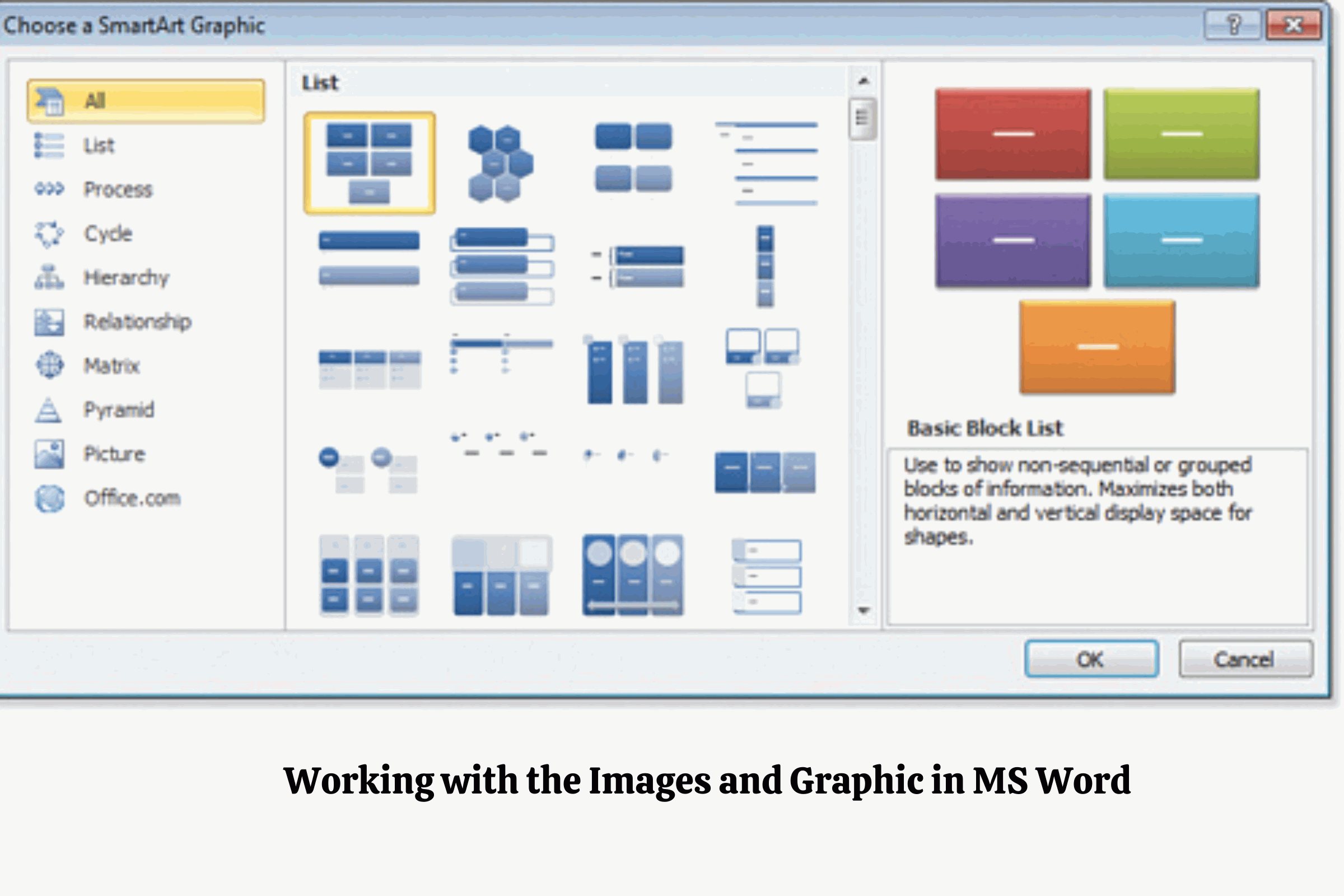
Graphic in WS Word
To add an image, click on the Insert tab and then click on the Pictures button.
To format an image, select the image and then click on the Picture Tools tab.
To add captions, right-click on the image and then choose Insert Caption.
To insert shapes, click on the Insert tab and then click on the Shapes button.
To add text boxes, click on the Insert tab and then click on the Text Box button.
What are the business uses for Microsoft Word?
Microsoft Word provides a variety of business applications that help boost workplace productivity and efficiency. Following are some examples of frequent business applications for Microsoft Word:
Document sharing: Word makes it easy to share documents via email, cloud storage, or other file-sharing services.
Microsoft Word can be used to create professional and legally compliant contracts, such as employment, sales, and service agreements.
Team collaboration: Word's collaboration capabilities enable teams to collaborate on projects or ideas by editing the same document.
Mail merge: Word's mail merge tool can be used to customize documents for multiple recipients.
Branding features: Word offers a variety of tools for creating branded documents.
Templates can be used to create business documents, saving time and ensuring uniformity.
What are some other uses for Microsoft Word?
Microsoft Word is a powerful application that may be used for a variety of things other than business-related duties. These are some more common applications for Microsoft Word:
1. Calendar:
With adjustable fonts, colors, and formatting, Word's calendar templates may be used to build monthly or yearly calendars.

Calendar in MS word
2. Letterhead
Word's design capabilities may be used to create personalized stationery or letterhead for personal or professional usage.
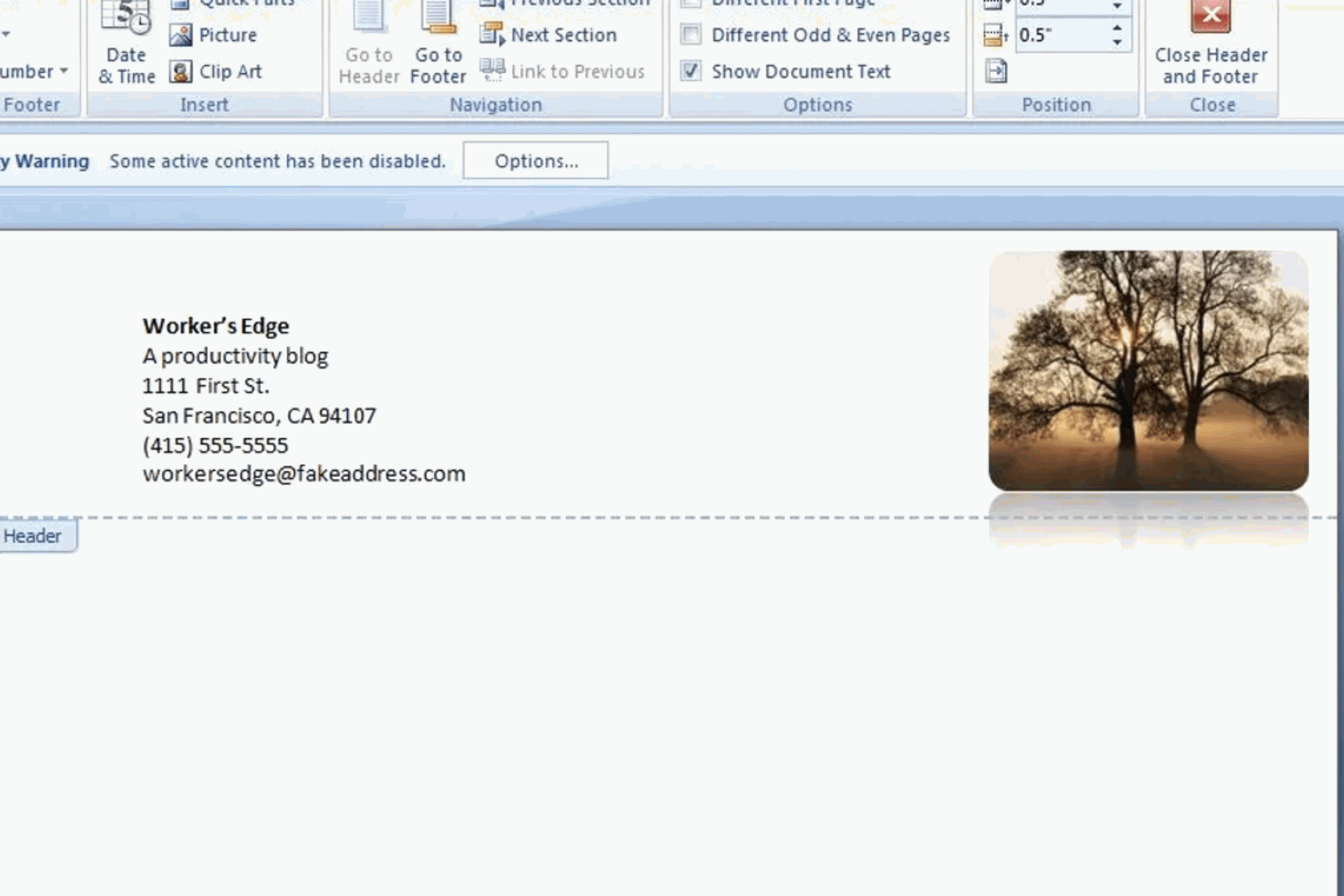
Creating letterhead in Microsoft word
3.Postcards:
You may use Word's layout and design capabilities to make bespoke postcards for special events like holidays or birthdays.
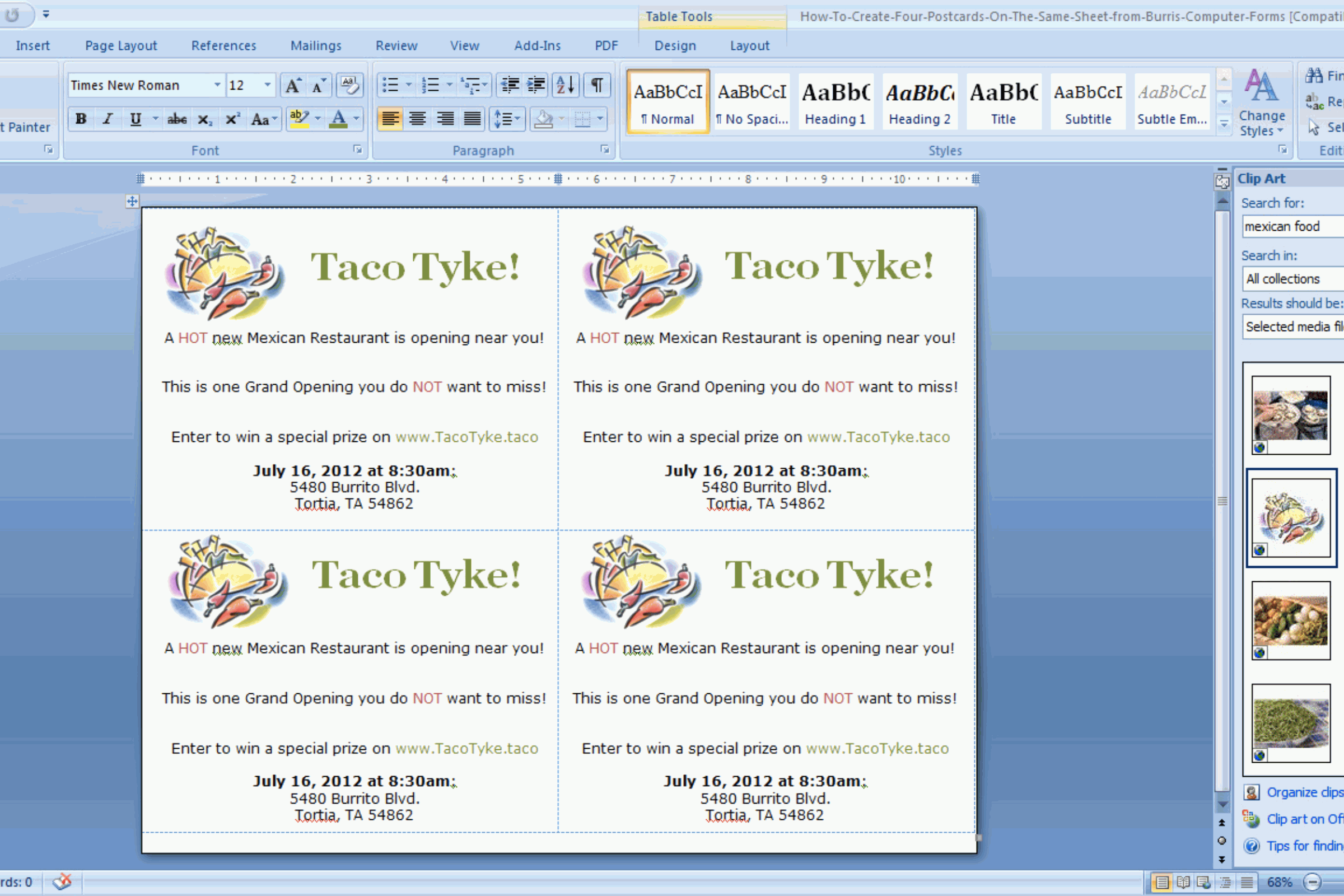
Creating postcards in MS Word
4.Newsletters:
With the ability to integrate photos and text, Word's formatting and design features may be used to produce newsletters for personal or professional usage.
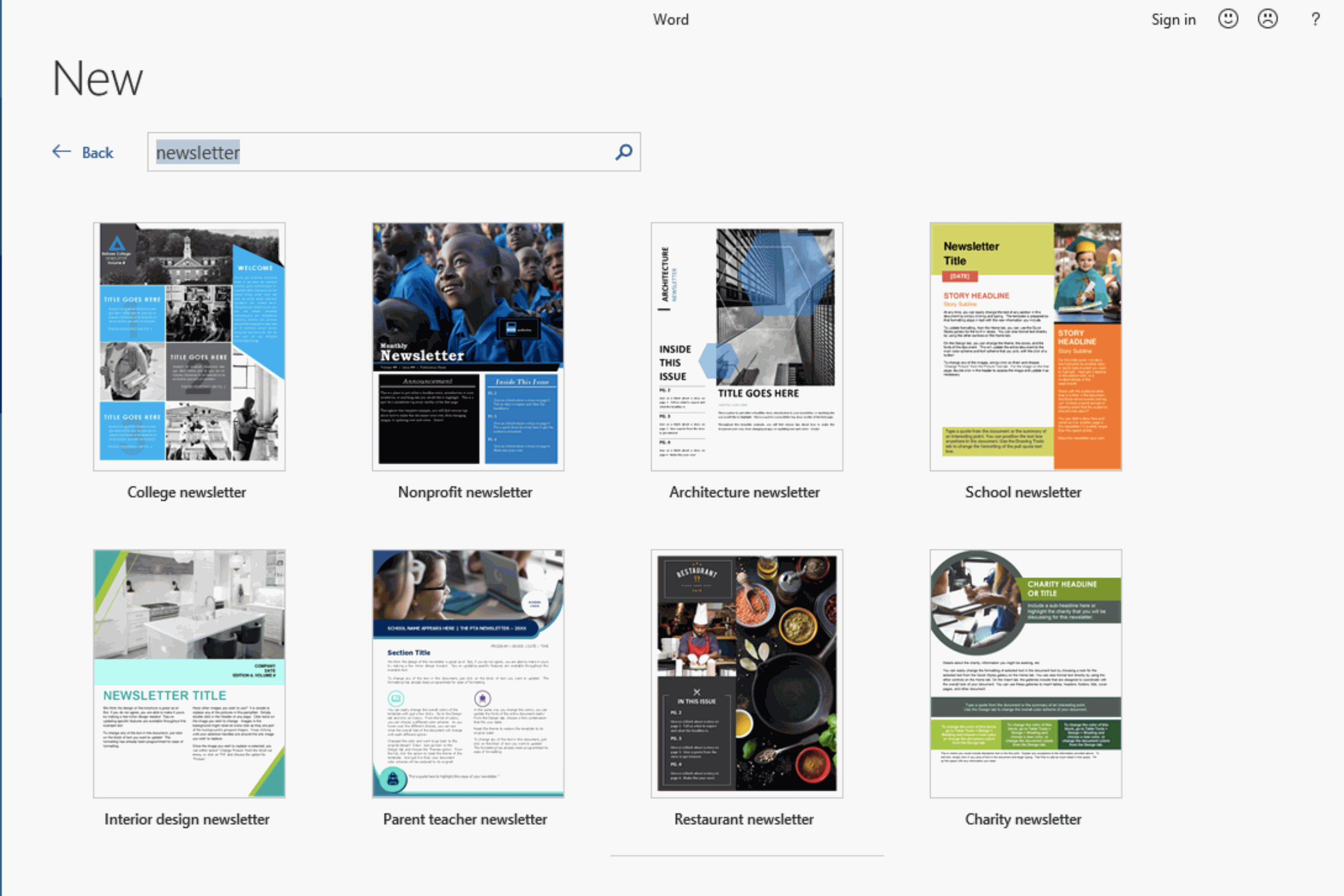
Newsletters in MS Word
5.Flyers or invites:
You may use Word design tools and templates to make flyers or invitations for events like parties or fundraisers.
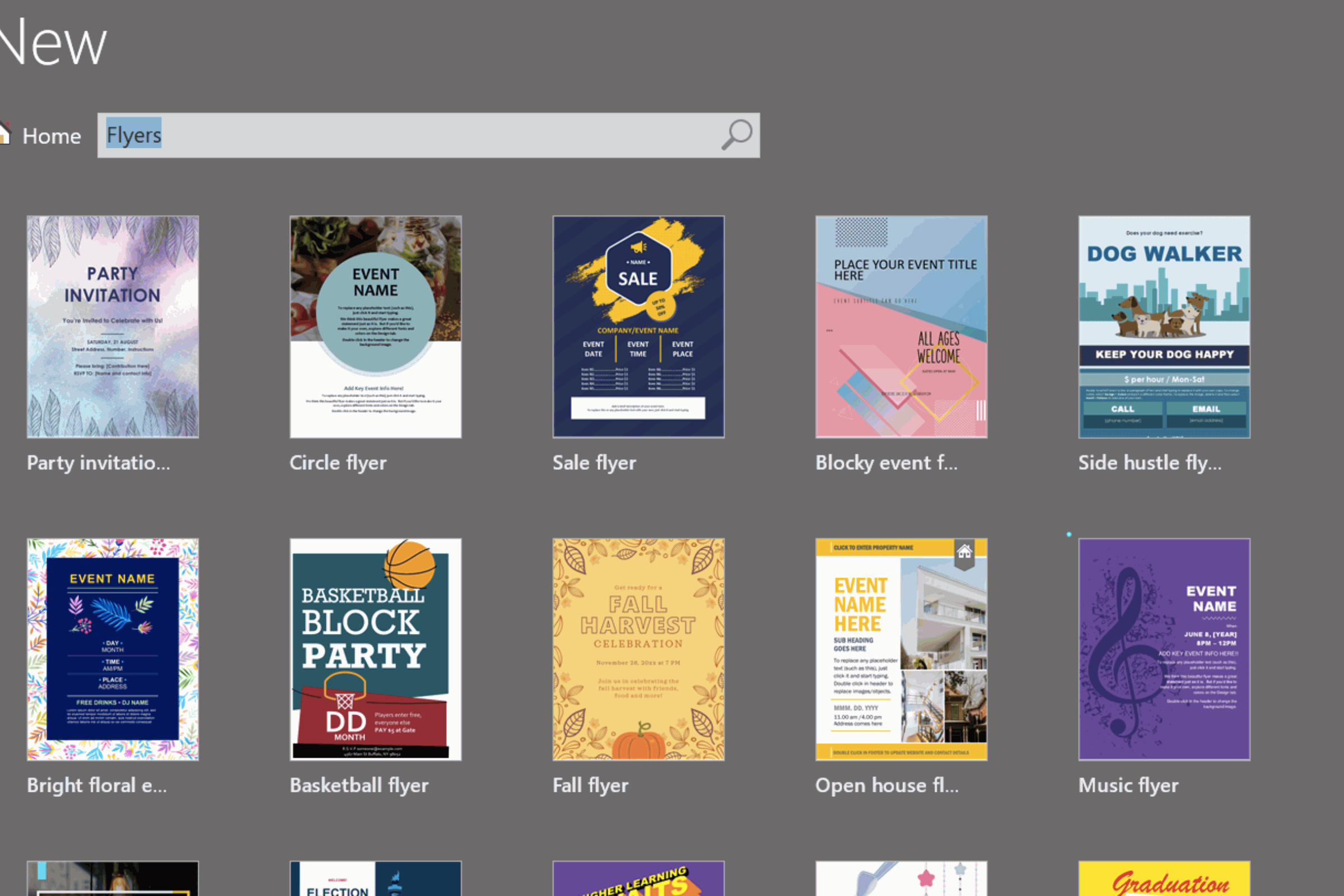
Creating Flyers in MS Word
Summary of key points
Microsoft Word is a comprehensive word-processing software that includes several key features to enhance the user's experience. These include the Home tab, Insert tab, Design tab, Page Layout tab, Review tab, and References tab.
- The Home tab includes basic formatting options for text, such as font styles, sizes, colors, and alignment.
- The Insert tab includes tools for adding various types of content to the document, such as tables, charts, pictures, and shapes.
- The Design tab provides tools for formatting the overall appearance of the document, such as choosing a theme, setting page colors, and applying styles to headings and text.
- The Page Layout tab allows you to customize the layout of the document, including page margins, orientation, and size.
- The Review tab includes tools for proofreading and editing the document, such as spelling and grammar check, thesaurus, and word count.
- The References tab provides tools for managing sources and citations in the document, such as inserting footnotes and endnotes, creating a table of contents, and managing a bibliography.
Benefits of using Microsoft Word
Word is user-friendly and easy to learn, making it accessible to users with varying levels of experience. It includes a wide range of formatting, editing, and design tools to help users create professional-looking documents. It is widely used, so files created in Word can be easily shared and opened by others, regardless of their operating system or software.
Word integrates seamlessly with other Microsoft Office applications, such as Excel and PowerPoint, allowing users to work across different programs and collaborate on projects. Time-saving features include auto-correct, auto-formatting, and templates that can be customized for specific needs. Improved productivity includes increased productivity and efficiency in the workplace. Accessibility features include text-to-speech and read-aloud, which can help users with visual impairments or reading difficulties. Overall, Microsoft Word is a powerful and versatile tool that offers many benefits for users in a variety of settings.
Final thoughts and recommendations
To summarise, Microsoft Word is an extremely strong and adaptable application that provides a wide variety of functions for producing and modifying documents. Word includes everything you need to produce professional-looking documents for personal or business usage, from basic formatting and editing capabilities to more complex features like mail merge and graphics.
While the program might be scary at first, exploring its capabilities and learning how to utilize them can dramatically improve your productivity and efficiency. Microsoft Word contains the skills and powers to help you reach your goals, whether you are a student, a professional, or a personal user.
It is advised that you use internet resources like tutorials, forums, and videos to get the most out of Word. Also, frequent practice with Word might help you grow more comfortable and competent with the software.
Ultimately, Microsoft Word is a crucial tool for anybody who wants to produce or edit documents, and it's no surprise that it has become the go-to word processing program for so many people across the world, thanks to its extensive feature set and user-friendly design.

